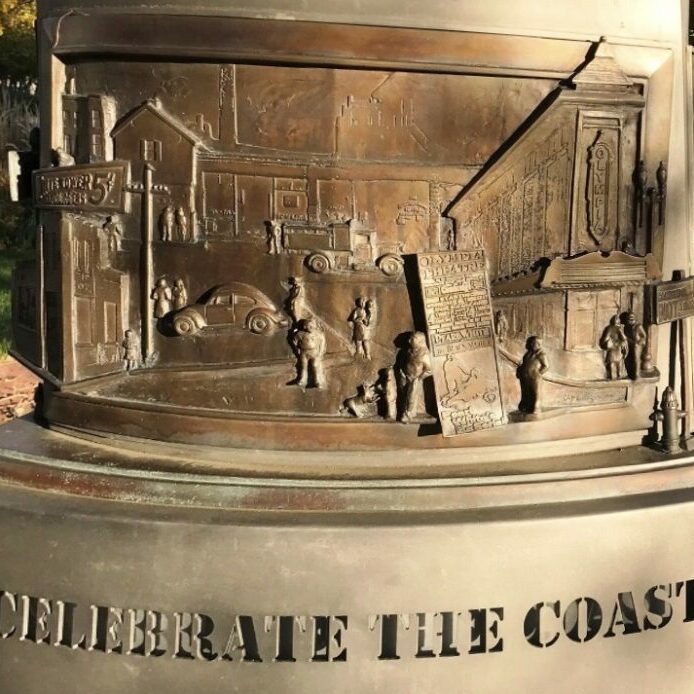
History Cambridge is answering your questions about Cambridgeport
Above image: Detail of David Fichter’s “Celebrate the Coast” sculpture, McElroy Park (Photo credit: History Cambridge)
In 2023, History Cambridge is focusing on Cambridgeport, exploring the people, places, and stories that have shaped the neighborhood. As part of this effort, we are asking residents what they want to know about Cambridgeport, and endeavoring to bring you the answers. The variety of topics about which Cantabrigians are curious reflects the diversity of our city and the wealth of stories that are waiting to be shared.
A common theme in many of the questions we received is the origin of names—names of streets, of parks, and of the neighborhood itself. What we choose to call places reflects the ways in which we define them, and who and what we think is worthy of commemoration. One resident was curious about Fulmore Park and how it came to be known as “Chicken Park.” This small park on Sydney Street has become famous for the neighborhood chickens who routinely escape their coop and explore the park, much to the delight of the children who use its playground. Among those children are the members of the Tot Lot, a Cambridgeport child care cooperative that often visits the park, and that is approaching its 50th anniversary as a fixture in the community.
Several residents have asked about the meaning behind the names of the Cambridgeport streets where they live, work, and play. One such street is Pearl Street, whose origins can be traced to the area’s history as the Great Marsh. Before the neighborhood was reshaped by the system of canals that helped to make it a gateway port to the Atlantic Ocean, much of Cambridgeport was covered by a vast salt marsh. For thousands of years before the arrival of European colonizers, the Indigenous people here gleaned hay and oysters from the marsh, practices which the colonists adopted when they arrived in the seventeenth century. Although Pearl Street is now completely landlocked, it was once part of the marshland that produced pearls, among other items for human use.
A number of residents inquired about the varying names for the neighborhood—Cambridgeport, The Port, Riverside, and The Coast. Although these names each refer to a slightly different geographic area of the city, they overlap significantly. The ways in which these definitions have changed over time, as well as what the neighborhood is called by different groups of people, reflect the complexity of neighborhood boundaries and a sense of ownership and cohesion in a community. Cambridge Day offers this guide to the areas of the city, which includes both the official neighborhood designations by the city government and the more informal names used by many residents. But the names for the neighborhood that contains much of what we now call Cambridgeport also reflect changing demographic trends in the city, including the influx of immigrants from the Caribbean in the twentieth and twenty-first centuries which has led to the area being renamed The Coast.These are just a few of the things Cantabrigians want to know about Cambridgeport, and History Cambridge will continue to explore and investigate the stories of the neighborhood as our Year of Cambridgeport continues. Learn more about the neighborhood—and ask us your questions—at our Cambridgeport History Hub, and sign up for our newsletter to find out more about upcoming events in Cambridgeport and beyond.
Beth Folsom is programs manager for History Cambridge.
This article was originally published in our “Did You Know?” column in Cambridge Day.

